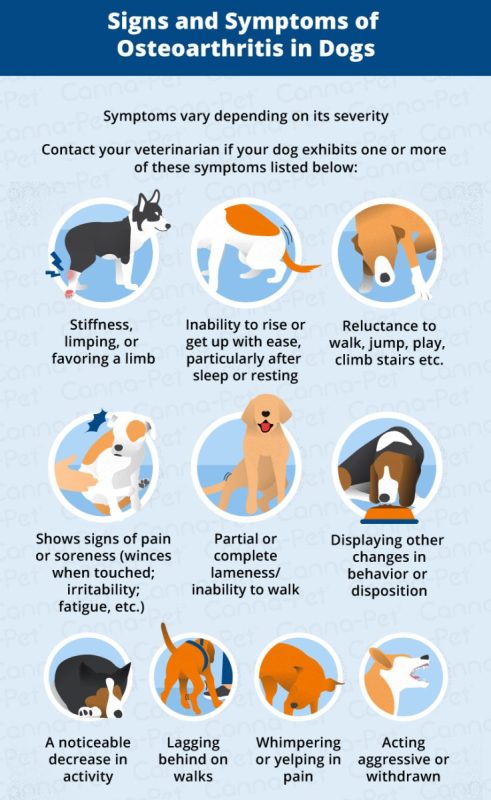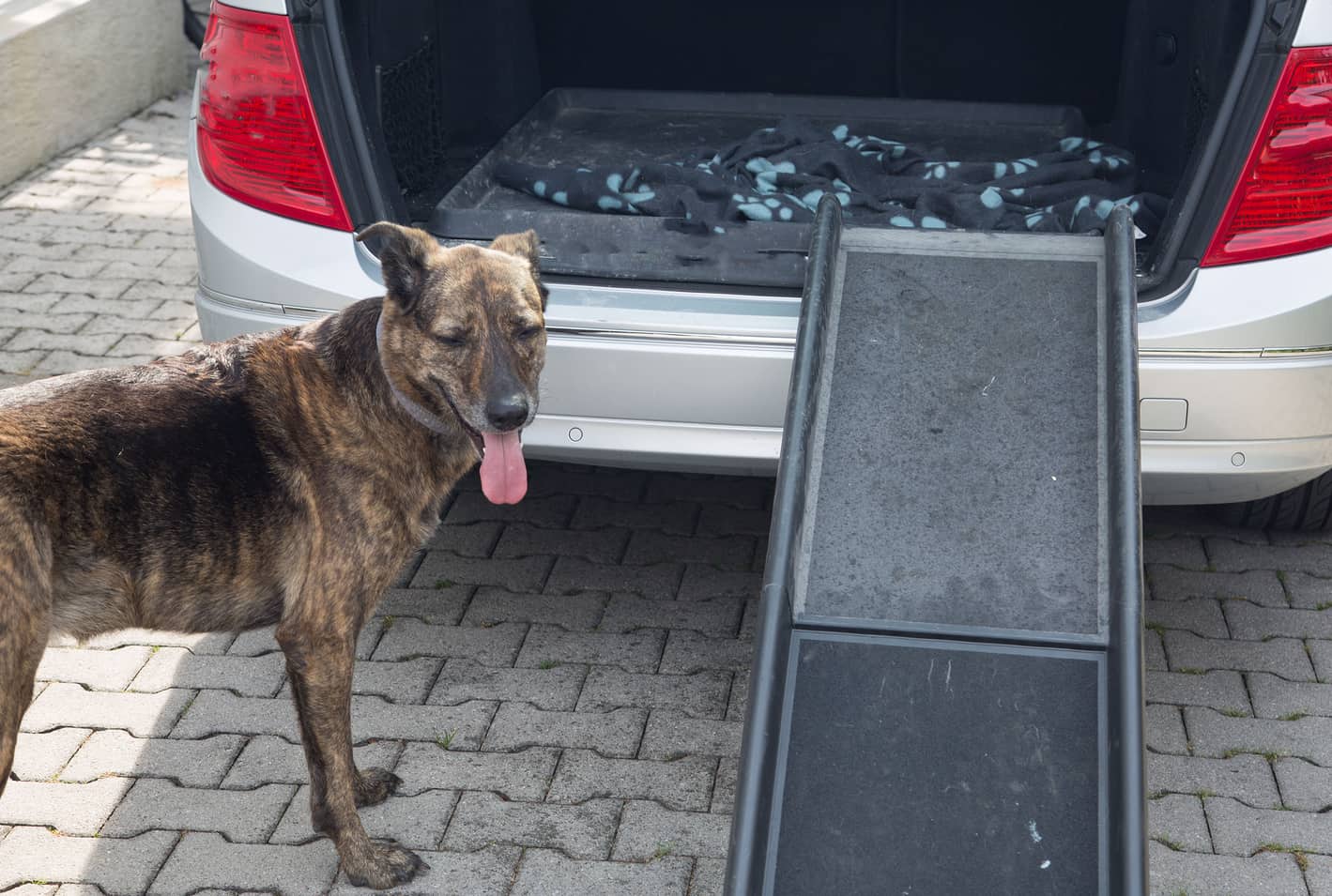
Osteoarthritis in Dogs: Symptoms and Treatment
According to the American College of Veterinary Surgeons, osteoarthritis in dogs occurs in about 25% of cases. Unlike conventional arthritis, osteoarthritis is characterized by damage and destruction of articular cartilage and is most common in adults and older pets. How can you track signs of arthritis in dogs and help your pet if he develops this disease – later in the article.
Contents
How arthritis develops
People, especially athletes, are prone to osteoarthritis as a result of injuries to the cruciate ligament, a structure located in the knees, neck, and fingers. About half of people over age 65 have osteoarthritis, according to the Centers for Disease Control and Prevention. A dog’s body undergoes similar changes as they age – their cartilage wears down over time.
Cartilage serves as a shock absorber between bones. When cartilage is damaged, the protective cushion is broken and the joints are subject to wear and tear. Trying to slow down further destruction, the body forms new bone growths – osteophytes, or bone spurs. Unfortunately, this new bone does not become a complete replacement for cartilage, and the joint becomes a chronic source of pain.
The hip, elbow, and knee joints are most commonly affected in dogs. As the University of Colorado Veterinary Hospital explains, the development of osteoarthritis is usually secondary to general cranial-cruciate ligament disease. The deterioration of the ligament with age, combined with factors such as genetics and obesity, contribute to its ultimate destruction.

Causes of Osteoarthritis in Dogs
Many factors can contribute to the development of arthritis in dogs. They may develop joint problems as a result of infectious diseases such as systemic lupus erythematosus and Lyme disease. Genetic conditions, including hip and elbow dysplasia, can pose additional risk to a dog.
Other causes are easier to prevent. Obesity in pets puts undue stress on the joints and often leads to premature degenerative changes. Osteoarthritis is just one of the problems associated with overweight dogs, along with heart disease, cancer, and diabetes. Traumatic injuries can occur at any age and cause chronic osteoarthritis in a dog. Road traffic accidents are the most common source of bone injury resulting in cartilage damage.
Signs of Arthritis in Dogs
Signs of osteoarthritis in dogs are similar to those seen in cats. Because cats love to jump and climb vertical surfaces, their owners often notice that as their osteoarthritis progresses, they do so less and less. In dogs, arthritis may present as lethargy or general stiffness. Take your dog to the veterinarian if he starts showing any of the following signs:
- Lameness.
- Stiffness when rising from a lying position.
- Reluctance to walk.
- Reluctance to run and play.
- Difficulty going up and down stairs.
- Difficulty jumping on furniture or in cars.
- Unnatural or one-sided gait.
- Yelping, growling, or trying to pull away when the affected joint is touched.
Treatment and Prevention of Osteoarthritis in Dogs
Because osteoarthritis in pets cannot be completely cured, prevention and early intervention are paramount. Helping a dog maintain a healthy weight from the time it is born is an important deterrent to osteoarthritis. Another precaution is to train your four-legged friend on a leash and walk him on a leash or in a fenced yard to avoid injury from an accident. If the pet is purchased from a breeder, it is best to check both parents for orthopedic problems such as hip dysplasia.
Despite the best efforts of owners, osteoarthritis in dogs is often unavoidable. Once the veterinarian has confirmed the diagnosis through physical examination, X-ray, magnetic resonance imaging (MRI), or computed tomography, they will discuss treatment options for the dog with the owner.
A doctor may prescribe non-steroidal anti-inflammatory drugs (NSAIDs) or other medicines to relieve pain and reduce symptoms of osteoarthritis. He may recommend joint health supplements such as glucosamine or chondroitin sulfate, two components of cartilage. Omega-3 fatty acids, another supplement given to dogs with osteoarthritis, have anti-inflammatory properties.
While nutritional supplements are often available over the counter, under no circumstances should they be given to a dog without a prescription from a veterinarian. All medicines and supplements can cause side effects and should be taken under close medical supervision.
Other non-traditional but potentially beneficial treatments include acupuncture, massage, and laser therapy. Rehabilitation facilities that provide such services may offer hydrotherapy, underwater treadmill exercises, which are an excellent form of lighter stress on the joints of dogs with degenerative joint changes.

Other ways to help your dog
Nutrition plays an important role in the prevention and treatment of osteoarthritis in dogs. Your veterinarian may first recommend a weight loss diet food or a special diet to support joint health. Some of these foods already contain additives such as glucosamine, but in a more palatable and easier to use form.
In more severe cases, surgery may be necessary. For example, total hip replacement has shown excellent results in restoring motor function in dogs at risk of disability and in dogs with developmental disabilities.
In addition to the options recommended by the veterinarian, dog owners can take preventive measures at home to ensure maximum comfort for the dog. Soft bedding, ramps to help get into the car and onto the stairs, anti-slip mats on slippery floors will help your pet a lot. It is better to block any stairs so that the dog does not slip and fall, and also keep an eye on it while walking on the street.
Watching a loved one grow old can be very sad, but there are plenty of ways to help him live a long, happy and quality life in the family. Watch for signs of arthritis in dogs to keep your pet healthy for as long as possible.





